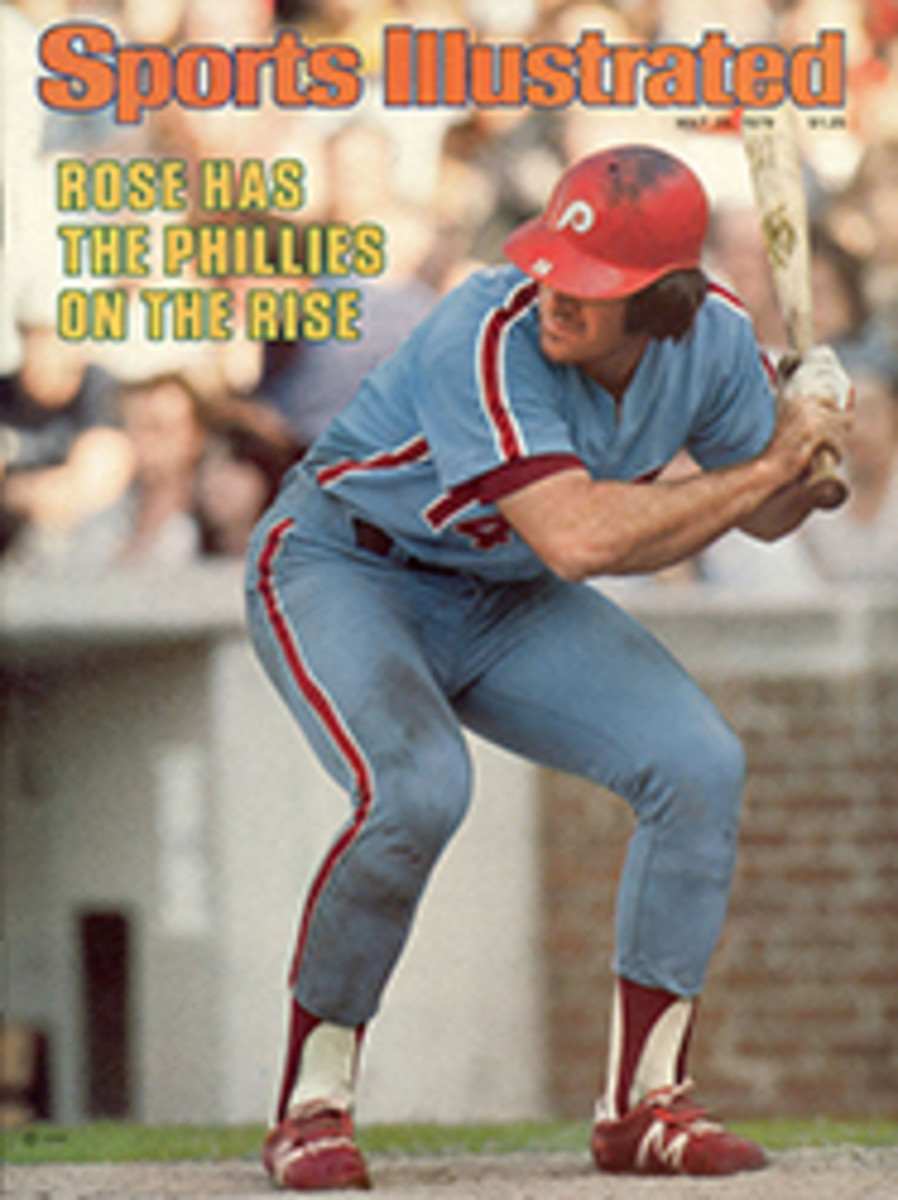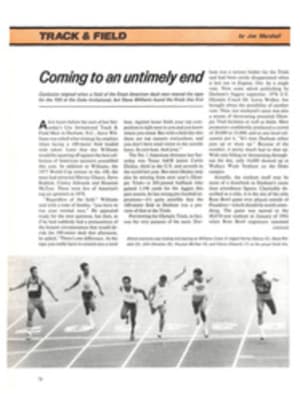
TWO HEFTY VOLUMES CALLED 'TROUT' ADD UP TO ONE WHALE OF A FISH TALE
What you notice first about Ernest Schwiebert's Trout (E. P. Dutton, $75) is its bulk (two thick volumes, 1,745 pages), its price and its weight, apparently about 10 pounds. That is mighty heavy for anything called Trout, but only by the standards of ordinary anglers, office-bound and full of dreams. Schwiebert, the author of Matching the Hatch, Salmon of the World, Remembrances of Rivers Past and Nymphs, belongs to a more exclusive group, those who earn their livelihoods with typewriter and fly rod and who classify their fishing trips by continent.
The rivers of South America are among Schwiebert's favorites—he has taken a 14-pound rainbow trout from Patagonia's Nirihuau—but he has to his credit dozens of other giants from equally exotic waters in Europe, the U.S. and Canada. In Trout, he writes evocatively of these experiences, though his recollections are relevant to the catching of all fish. His trout are far larger than ours, most of the waters they swim in hopelessly removed from our lives, but all fishermen are brothers, so we understand.
Any fisherman who has seen a giant fish—perhaps a bass, if not a wild trout—can sympathize with Schwiebert as he stands, heart racing, in the shallows of Argentina's little Boca Auquinco watching a world-record brook trout. "It passed 10 feet out," he writes, "its dorsal fin cutting the surface like a shark, and I stared in awe...." Trout is filled with that kind of wonderment. Of his first boyhood trout on a fly, a 10-inch brown, Schwiebert admits, "...I have taken 20-pound salmon that are less pervasive in the mind and that gave me less pleasure."
But Trout is far more than just a gracefully written journal. It is also a work of scholarship, of prodigious research. Schwiebert ends one chapter with this statement about fly-fishing: "...we are part of a contemplative sport that is rich with the overtones of centuries and deeply rooted in antiquity." Then, in 170 pages that could stand alone as a classic, he digs deep to reveal these roots, recalling such pre-Waltonians as Confucius, Antony and Cleopatra, and the ancient Chinese sage Chiang Tzu-Ya, who wrote that fishing is "morally edifying." Schwiebert also follows fly-fishing for trout from its beginnings in ancient Macedonia, where they used flies made from ruby-colored wool and feathers the color of dark wax.
In the United States the sport first flowered in the 19th century with the native brook trout of the Eastern mountains. Schwiebert chronicles the rise and decline of that fishery; then, in extraordinary detail, he traces the story of fishing for the rainbow trout and brown trout, which all but took the brook trout's place.
The first rainbow eggs, he writes, sailed around Cape Horn from California to the East Coast in 1874, through wintry seas in ice-filled trays; the first brown trout eggs were shipped from Germany to Plymouth, Mass. in 1882. Schwiebert profiles these two most important species of American trout with great thoroughness and complexity, and does the same for the brook, lake, cutthroat, golden and Dolly Varden trout, and a variety of little known chars. He includes in his histories anecdotes about men, famous in other fields, who became involved with the fish: Daniel Webster, for example, once caught a world-record brook trout on Long Island.
The pages of Trout are filled with obscure and fascinating bits of information, with ichthyology, entomology and ecology, and with personal adventures that entertain as well as instruct. "There was a simple tractor bridge in the haymeadows of a boyhood stream...." Schwiebert begins what might have been a cut-and-dried chapter, entitled "Physiology, Habitat and Behavior." He recalls peering down from the bridge, and his fascination with the "singular litheness" of trout; he speaks of Schubert and quotes Yeats before launching into a treatise on fish scales, muscle rhythms and fin structure.
The sensory perceptions of trout? Schwiebert again goes back to his boyhood and tells how hooked grasshoppers, dragged against the current, made the fish suspicious, how "...my rod tip and line projecting through the grass triggered them too." He spends 45 pages telling how trout see, hear, feel and avoid capture, concluding that "...scientific and technical intricacies should not diminish our love for the quicksilver poetry of the fish themselves."
Schwiebert also spends 179 pages discussing bamboo, its origins and the intricate details of its miraculous conversion into fly rods. But shining through the enormous mass of facts is an attitude of reverence; it is there throughout Trout, permeating the passages on fishing in Yugoslavia, Norway, Ireland, Labrador and Tierra del Fuego; dry and wet flies, streamers, bucktails and nymphs; little streams and reservoirs; wading, casting and striking.
Trout actually weighs only 8‚Öõ pounds. But what fisherman ever underestimated the weight of anything with such a name? At $75 for the set, that is somewhat less than $10 per pound. A deluxe edition costs $175, which comes to just over $20 per pound. Those are caviar prices, but Trout is no ordinary fish dinner.

